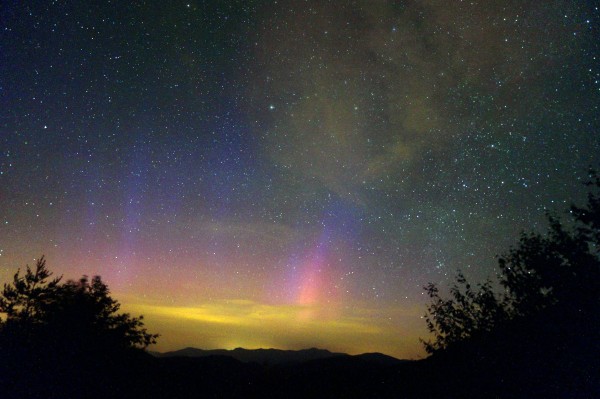Parallels in Cosmos and Spirit
Everyone needs an origin story. Not just a tribal one, of where we came from and where we are going to, but one for our species and by extension, for our world itself. We have theories but none match all the data, which forces us to either discard data or admit the mystery exists and probably always will.
Humanity will probably always be a little bit unstable until it has a myth of the cosmos that it can trust. We can believe in a Big Bang, but we wonder about what happened before that to cause energy, space, and time to come into existence.
Physics gives us a few views, but it seems to be at the end of its own reach, since these are fairly vague and focus on the mathematics of existence beyond where material science can see:
Modern physics suggests time may be an illusion. Einstein’s theory of relativity, for example, suggests the universe is a static, four-dimensional block that contains all of space and time simultaneously — with no special “now.”
What’s the future to one observer, is the past to another. That means time doesn’t flow from past to future, as we experience it.
Relativity of course came to Einstein via Schopenhauer who was in turn inspired by the ancient Hindu scriptures which themselves reflected the Proto-Indo-European Faith (PIEF) that came into existence tens of thousands of years ago with the rise of modern humans (Cro-Magnids and their derivatives). This view saw the world as informational.
Plato took that football and ran with it, posturing a world of thought-like impulses that is larger than this one and to which this one serves a counterpoint, sort of like a place where definitive answers can be had, in contrast to the telescoping pluralism of infinity.
Schopenhauer in turn saw a life-force, the Will, expanding in a panentheist sense to occupy all facets of physical reality. This jarred with intuition because the non-NPC people at least saw themselves as having consciousness and autonomous choice.
Perhaps the Hindu vision taken to its logical extreme shows us a counterpoint to both Einstein and Schopenhauer through a sense of the unity of thought and matter known as aduality:
Gaudapada builds further on the Mahayana Buddhist concept of shunyata (“emptiness”). He argues that there is no duality; the mind, awake or dreaming, moves through maya (“illusion”); and nonduality (advaita) is the only final truth. That truth is concealed by the ignorance of illusion. There is no becoming, either of a thing by itself or of a thing out of some other thing.
Much of this addresses the tendency toward neoplatonism or metaphysical dualism, an idea that there is a pure world and an impure physical reality, and morality lies in rejecting the latter for promises of the former. Many of us cynics find that troubling, too.
More likely, we are reverting to the PIEF which was probably minimal and relied on a few concepts rather than reams of paper like the Abrahamic religions. It was most likely passed on in oral tradition through stories because these transmit well over the ages and communicate across language shifts better than pure philosophy.
We revive these traditions today with Germanic Idealism and other philosophies that suggest an underlying substrate to the universe made of thought, information, mathematics, or other thought-like structure. In this view, our world is the manifestation of something greater.
This dovetails with where science has gone. Through relativity, our experience creates itself, but it is part of a larger entity of which physicality is one part, sort of like islands in an ocean. Our island has material presence and what appears to be mostly linear time, but others may have different composition.
Kant would have us look to our intuition. There we see a universe which against all odds produced consciousness, in which the functional is rewarded, and through which we have a belief in infinity and therefore the continuation of life after death. Children know this world more than our own for a number of years.
The PIEF probably featured gods as manifestation of forces in nature, lawless and amoral, simply expanding outward like Schopenhauer’s Will and doing what is in their character as we expect animals and plants to do. For them, humans were another species that only periodically held interest, sort of like how it does not rain or storm every day.
The best part about the PIEF is that it is derived entirely from logic and observation of the world. If something exists, it had a start; if it had a start, it arose from something; if there was nothing, then nothing itself must be a thought, an idea, or an informational structure. Everything is cause-effect.
Even more, we look at the seasons and see how life cycles. Things appear, disappear, reappear. They get better over time as the lesser options fade out because the better options take their place. Humanity does not like the order of nature, but it is the source of our birth and shaped us to be what we are.
In nature, nothing happens by chance, but it does not happen linearly either. It happens through many repetitions of similar actions, testing everything against everything else. Nothing occurs without a design, and that design comes from what it is tested against, so everything has a logical place.
All of our present faiths are faded imitations of this one idea: the mind parallels physicality; time parallels pattern; our little detail lives parallel the founding of the universe. Everything makes sense, and life has meaning not outside of itself, but in the living of it, and the desire to live it well.
Tags: albert einstein, arthur schopenhauer, germanic idealism, PIEF, plato, religion, spirituality










